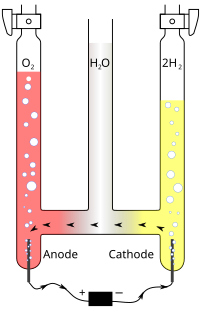
Photo from wikipedia
The thermal decomposition of the energetic component and chemical reactions occurring at elevated temperatures in a flameless combustion wave of systems based on hexogen (filled with iron(II) formate and polyisocyanurate… Click to show full abstract
The thermal decomposition of the energetic component and chemical reactions occurring at elevated temperatures in a flameless combustion wave of systems based on hexogen (filled with iron(II) formate and polyisocyanurate binding agent) afford a mixture of iron oxides and iron nitride as nanosized particles. The purposeful change in the ratio of the indicated basis components can provide individual Fe2O3, Fe3O4, or FeO in the conversion products. Additives of anthracene and hydroquinone to the initial composition can result in the formation of predominantly iron carbide in the products, whereas mainly iron nitrides are formed upon the addition of guanidine nitrate or 5-aminotetrazole. The addition of aluminum hydride components to the initial mixture results in the reduction of iron to the zero-valence state in the form of iron—aluminum intermetallic compounds.
Journal Title: Russian Chemical Bulletin
Year Published: 2017
Link to full text (if available)
Share on Social Media: Sign Up to like & get
recommendations!